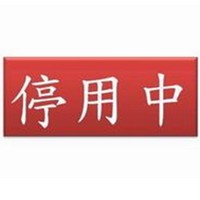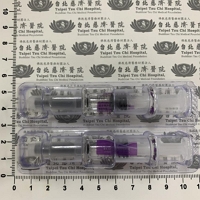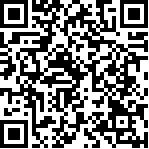藥品名稱
drug name | Influenza virus vaccine 0.5 mL/syringe (AdimFlu-S (QIS)) 108年成人自費4價流感疫苗) 單純施打 |
| 藥檔狀態 | 停用 |
成 份
Ingredient | Influenza virus vaccine |
| 單位含量 | 0.5 mL/Syringe |
| Dosage Forms | Suspension Prefilled Syringe, Intramuscular : 0.5mL/syringe |
| 外觀描述 | |
| Appearance | |
廠商名稱
Manufacturer | 國光生物科技股份有限公司 |
製 造 商
Manufacturer | 國光生物科技股份有限公司 |
字 號
Product ID | 衛部菌疫製字第000138號 |
藥理分類
Pharmacologic Category | Vaccine; Vaccine, Inactivated (Viral) |
作用機轉
Mechanism of action | Promotes immunity to seasonal influenza virus by inducing specific antibody production. Preparations from previous seasons must not be used. |
| 用途/適應症 | |
| Use |
Influenza disease prevention: Active immunization against influenza disease caused by influenza virus subtypes A and type B contained in the vaccine in the following persons:
- US labeling:
‧ ≧6 months of age (Afluria Quadrivalent, Fluarix Quadrivalent, FluLaval Quadrivalent, Fluzone Quadrivalent)
‧ ≧4 years of age (Flucelvax Quadrivalent)
‧ ≧65 years of age (Fluad, Fluzone High-Dose)
- Canadian labeling:
‧ 6 months to <2 years (Fluad Pediatric)
‧ ≧6 months of age (Agriflu, FluLaval Tetra, Fluviral, Fluzone Quadrivalent)
‧ ≧5 years of age (Afluria Tetra)
‧ ≧18 years of age (Influvac Tetra)
‧ ≧65 years of age (Fluad, Fluzone High-Dose)
The Advisory Committee on Immunization Practices (ACIP) recommends routine annual vaccination with the seasonal influenza vaccine for all persons ≧6 months of age who do not otherwise have contraindications to the vaccine. The ACIP and American Academy of Pediatrics (AAP) recommend use of any age and risk factor appropriate product and do not have a preferential recommendation for an influenza vaccine product; in addition to inactivated influenza vaccines (IIV3, IIV4), the live attenuated vaccine (LAIV4) may be used for persons ≧2 years of age and recombinant influenza vaccine (RIV) can be used in persons ≧18 years of age (AAP 2019; CDC/ACIP [Grohskopf 2019]).
The Canadian National Advisory Committee on Immunization (NACI) recommends the following (NACI 2019): Annual vaccination with seasonal influenza vaccine for all persons ≧6 months who do not otherwise have contraindications to the vaccine. Healthy, nonpregnant persons aged 2 to 59 years may receive vaccination with the seasonal live, attenuated influenza vaccine (LAIV) (nasal spray). The following influenza vaccine preferences should be considered:
‧ Persons 6 to 23 months of age: Quadrivalent inactivated influenza vaccine (IIV4) is preferred or trivalent inactivated influenza vaccine (IIV3) if IIV4 is not available.
‧ Persons 2 to 17 years of age: Either IIV4 or LAIV is preferred (IIV3 may be considered if neither IIV4 nor LAIV are available).
‧ Persons ≧65 years of age: IIV3-HD (high dose) is preferred over IIV3-SD (standard dose); however, any available IIV3 or IIV4 vaccine may be used for public health program-level decision making.
‧ Health care workers: Either IIV4 or IIV3 are recommended; LAIV should not be used.
When vaccine supply is limited, target groups for vaccination (those at higher risk of complications from influenza infection and their close contacts) include the following (CDC/ACIP [Grohskopf 2019]):
‧ All infants and children 6 to 59 months of age
‧ Persons ≧50 years of age
‧ Infants, children, and adolescents (6 months to 18 years of age) who are receiving long-term aspirin or salicylate therapy, and therefore, may be at risk for developing Reye syndrome after influenza
‧ Women who are or will be pregnant during the influenza season
‧ Patients with chronic pulmonary disorders (including asthma) or cardiovascular systems disorders (except isolated hypertension), renal, hepatic, neurologic, hematologic, or metabolic disorders (including diabetes mellitus)
‧ Persons who have immunosuppression due to any cause (including immunosuppression caused by medications or HIV)
‧ Residents of nursing homes and other long-term care facilities
‧ American Indians/Alaska Natives
‧ Extremely obese (BMI ≧40)
‧ Health care personnel, including students in these professions, who will have contact with patients and other persons not directly involved in patient care but may be exposed to infectious agents (eg, clerical, housekeeping, volunteers)
‧ Household contacts (including children) and caregivers of neonates, infants, and children <5 years (particularly neonates and infants <6 months) and adults ≧50 years
‧ Household contacts (including children) and caregivers of persons with medical conditions which put them at higher risk of severe complications from influenza infection
In addition, the NACI also recommends vaccination of patients with neurologic or neurodevelopment conditions including neuromuscular/neurovascular/neurodegenerative conditions, seizure disorders (including febrile seizures in pediatric patients and isolated developmental delay) but excluding migraines and psychiatric conditions without neurological conditions (NACI 2018).
|
衛福部核准適用症狀
MOHW approved indications |
預防流感。 說明:本疫苗適用於3歲以上兒童及成人之主動免疫接種,藉以預防此疫苗所涵蓋之兩種A型及兩種B型流感病毒所引起之流感相關疾病。
|
| 常用劑量 |
(藥品劑量會因人或病情增減,請依照醫師指示服用。) |
| Dose |
Adult:
Influenza seasons vary in the timing and duration from year to year. In general, vaccination should begin preferably in September and October (in the United States) to ensure optimal immunity prior to onset and for the full duration of influenza activity in the community. Early vaccination (in July or August) for an upcoming influenza season has been associated with suboptimal immunity before the end of an influenza season, particularly in older adults. Vaccination should continue throughout the influenza season as long as vaccine is available. The Centers for Disease Control and Prevention does not recommend revaccination later in the season for those persons who have already been fully vaccinated. Advisory Committee on Immunization Practices does not have a preference for any inactivated influenza vaccine (IIV) formulation when used within their specified age indications (CDC/ACIP [Grohskopf 2019]). International considerations: Products with similar names but containing different strains may be circulating globally due to differences in recommendations between northern and southern hemisphere countries. In addition, recommendations related to use of influenza vaccines and approved ages may vary per country.
Immunization:
- Afluria Quadrivalent:
‧ Adults ≦64 years: IM or via PharmaJet Stratis Needle-Free Injection System: 0.5 mL per dose as a single dose (1 dose per season)
‧ Adults >64 years: IM: 0.5 mL per dose as a single dose (1 dose per season)
- Fluarix Quadrivalent, Flucelvax Quadrivalent, FluLaval Quadrivalent, Fluzone Quadrivalent: IM: 0.5 mL/dose (1 dose per season)
Canadian labeling:
- Afluria Tetra, Agriflu, FluLaval Tetra, Fluviral, Fluzone Quadrivalent: IM: 0.5 mL/dose (1 dose per season)
- Influvac Tetra: IM, SubQ: 0.5 mL/dose (1 per season)
仿單:
成人接種量,一劑0.5mL。
Pediatric:
Influenza seasons vary in the timing and duration from year to year. In general, vaccination should begin preferably in September and October (in US) to ensure optimal immunity prior to onset and for the full duration of influenza activity in the community. Early vaccination (in July or August) for an upcoming influenza season has been associated with suboptimal immunity before the end of an influenza season, particularly in older adults. Vaccination should continue throughout the influenza season as long as vaccine is available. ACIP and AAP do not have a preference for any given inactivated influenza vaccine (IIV) formulation when used within their specified age indications and appropriate risk factor selection (if applicable) (AAP 2019; CDC/ACIP [Grohskopf 2019]). According to ACIP, doses administered ≦4 days before minimum interval or age are considered valid; however, local or state mandates may supersede this timeframe (ACIP [Kroger 2017]).
International considerations: Products with similar names but containing different strains may be circulating globally due to differences in recommendations between northern and southern hemisphere countries. In addition, recommendations related to use of influenza vaccines and approved ages may vary per country.
- Immunization, annual: Note: Age is age at the time of the first dose.
>>> Infants ≧6 months and Children <9 years: The number of doses needed per flu season is dependent upon vaccination history (see below) (AAP 2019; CDC/ACIP [Grohskopf 2019]).
‧ One dose: If the patient received ≧2 doses of trivalent or quadrivalent influenza vaccine prior to July 1 preceding the current flu season start. The 2 doses need not have been received during the same season or consecutive seasons.
‧ Two doses (separated by ≧4 weeks) if any of the following:
- It is the patient`s first season of vaccination.
- Patient received ≦1 dose of trivalent or quadrivalent influenza vaccine prior to July 1 preceding the current flu season start.
- If vaccination status cannot be determined.
- Note: A child turning 9 years of age between the first and second dose should still receive 2 doses.
>>> Children ≧9 years and Adolescents: A single dose per season is needed.
>>> Product-specific dosing: Note: In infants and young children, the dose volume may be different for some formulations (eg, 0.25 mL vs 0.5 mL per dose); use precaution when verifying product selection and dose volume.
仿單:
- 3歲以上兒童接種量,一劑0.5mL。
- 未滿9歲兒童,若先前未曾注射過流感疫苗者,需接種2次,且間隔至少4週。
Geriatric:
Influenza seasons vary in the timing and duration from year to year. In general, vaccination should begin preferably in September and October (in the United States) to ensure optimal immunity prior to onset and for the full duration of influenza activity in the community. Early vaccination (in July or August) for an upcoming influenza season has been associated with suboptimal immunity before the end of an influenza season, particularly in older adults. Vaccination should continue throughout the influenza season as long as vaccine is available. The Centers for Disease Control and Prevention does not recommend revaccination later in the season for those persons who have already been fully vaccinated. The high-dose inactivated influenza vaccine (IIV), Fluzone High-Dose, contains 60 mcg of each vaccine antigen per 0.5 mL dose compared to 15 mcg of each vaccine antigen per 0.5 mL dose. The high-dose IIV formulation was shown to elicit a higher antibody response and may provide better protection against influenza illness compared to standard dose IIV3 formulations. However, the Advisory Committee on Immunization Practices does not have a preference for any given IIV formulation in older adults when used within their specified age indications (CDC/ACIP [Grohskopf 2019]).
Immunization: Adults ≧65 years of age:
- Afluria Quadrivalent, Fluad, Fluarix Quadrivalent, Flucelvax Quadrivalent, FluLaval Quadrivalent, Fluzone High-Dose, Fluzone Quadrivalent: IM: 0.5 mL/dose (1 dose per season).
- Canadian labeling:
‧ Afluria Tetra, Agriflu, Fluad, FluLaval Tetra, Fluviral, Fluzone Quadrivalent, Fluzone High-Dose: IM: 0.5 mL/dose (1 dose per season)
‧Influvac Tetra: IM, SubQ: 0.5 mL/dose (1 per season)
Renal Impairment:
There are no dosage adjustments provided in the manufacturer’s labeling.
Hepatic Impairment:
There are no dosage adjustments provided in the manufacturer’s labeling.
|
懷孕分級
Pregnancy Risk Factor |
依文獻內容判定系統稽核懷孕分級建置為:B
UpToDate:
Inactivated influenza vaccine (IIV) has not been shown to cause fetal harm when given to pregnant women, although information related to use in the first trimester is relatively limited (CDC/ACIP [Grohskopf 2019]).
Following maternal immunization with IIV, vaccine-specific antibodies are observed in the newborn (CDC 2018). Most studies evaluating the use of inactivated influenza vaccines during pregnancy have not shown an increased risk of adverse pregnancy events (CDC/ACIP [Grohskopf 2019]).
The risk for severe illness and complications from influenza infection is increased during pregnancy, particularly during the second and third trimesters (CDC/ACIP [Grohskopf 2019]). Influenza vaccination decreases the risk of laboratory-confirmed influenza in pregnant women (Thompson 2014) and infants <6 months of age whose mothers have been vaccinated (CDC 2018).
Influenza vaccination with any licensed, recommended, age-appropriate vaccine is recommended for all females who are or may become pregnant during the influenza season and who do not otherwise have contraindications to the vaccine (CDC/ACIP [Grohskopf 2019]). Use of an inactivated vaccine is recommended; vaccination may be done during any trimester of pregnancy (ACOG 732 2018).
Pregnant females should observe the same precautions as nonpregnant patients to reduce the risk of exposure to influenza and other respiratory infections (CDC/HHS 2019). When vaccine supply is limited, focus on delivering the vaccine should be given to females who are pregnant or will be pregnant during the flu season, as well as mothers of newborns and contacts or caregivers of children <5 years of age (CDC/ACIP [Grohskopf 2019]).
仿單:
已有超過2000位孕婦接種季節性流感疫苗的研究報告顯示並無任何胎兒產生不良影響。但本疫苗並無針對動物生殖系統的研究亦無接種於孕婦是否傷害胎兒或影響生殖能力的報告。由於孕婦是流感併發症的高危險族群且可在接種疫苗後提供胎兒保護力,除孕婦已知(或曾有)對本劑成分或雞蛋、雞肉、亦或其他雞來源物有過敏者外,建議孕婦應依流感流行的適用性優先施打本疫苗。
-----------------------------------------------------------
[FDA(美國食品及藥物管理局)懷孕分級說明:
A:對照試驗無法證實懷孕初期及後期使用會危害胎兒。
B:動物試驗無法證實對胎兒有害,但缺乏人類對照試驗;或動物試驗有副作用報告,但無法證實對懷孕初期及後期之胎兒有害。
C:動物實驗中對胎兒有害但缺乏孕婦對照實驗;或無動物及孕婦試驗。
D:證實對胎兒有害,但疾病對孕婦有生命威脅或較安全藥品無法使用或無效時可使用。
X:證實對胎兒有害,且使用後危害大於可能的益處。孕婦及可能懷孕婦女禁用。]
|
| 禁忌症 |
曾對於本疫苗中任何成分發生嚴重過敏反應(例如:全身性過敏反應),或過去曾在注射任何流感疫苗後發生嚴重過敏反應。
|
| Contraindications |
Severe allergic reaction (eg, anaphylaxis) to a previous influenza vaccination or to any component of the formulation
Additional manufacturer contraindications for Afluria Quadrivalent, Fluad, Fluarix Quadrivalent, FluLaval
Quadrivalent, Fluzone High-Dose, Fluzone Quadrivalent: History of severe allergic reaction (eg, anaphylaxis) to egg protein
Additional manufacturer contraindications for Canadian products: Agriflu, Fluad, Fluad Pediatric, FluLaval Tetra, Fluviral, Fluzone High-Dose, Fluzone Quadrivalent, Influvac Tetra: Hypersensitivity to egg protein; hydrocortisone (Fluad and Fluad Pediatric only).
Note: Both ACIP and NACI do not consider egg allergy a contraindication to influenza vaccination (CDC/ACIP [Grohskopf 2019]; NACI 2019).
|
| 常見副作用 | |
| Common adverse drug reactions | |
| Adverse Reactions |
Frequency not defined. Adverse reactions in adults ≧65 years of age may be greater using the high-dose vaccine, but are typically mild and transient.
- Cardiovascular: Chest tightness, hypertension
- Central nervous system: Chills, drowsiness, fatigue, headache, irritability, malaise, migraine, shivering
- Dermatologic: Diaphoresis, ecchymoses
- Gastrointestinal: Abdominal pain, anorexia, diarrhea, gastroenteritis, nausea, sore throat, vomiting
- Infection: Infection, varicella
- Local: Injection site reactions (including bruising, erythema, hematoma at injection site, induration, inflammation, itching at injection site, pain, rash, soreness, swelling at injection site, tenderness at injection site)
- Neuromuscular & skeletal: Arthralgia, back pain, myalgia (may start within 6 to 12 hours and last 1 to 2 days; incidence generally equal to placebo in adults; occurs more frequently than placebo in children)
- Respiratory: Bronchitis, cough, dyspnea, nasal congestion, nasopharyngitis, oropharyngeal pain, pharyngitis, pharyngolaryngeal pain, rhinitis, rhinorrhea, upper respiratory tract infection, wheezing
- Miscellaneous: Fever
<1%, postmarketing, and/or case reports: Abnormal gait, anaphylactic shock, anaphylaxis, angioedema, arthritis, asthma, Bell`s palsy, brachial plexopathy, brain disease, bronchospasm, cellulitis, chest pain, confusion, constriction of the pharynx, cranial nerve palsy, dizziness, dysphagia, eye pain, facial paralysis, febrile seizures, flu-like symptoms, flushing, Guillain-Barre syndrome, Henoch-Schonlein purpura (immunoglobulin A vasculitis), hot flash, hypersensitivity reaction (including oculorespiratory syndrome, an acute, self-limited reaction with ocular and respiratory symptoms) (CDC/ACIP [Grohskopf 2013]), hypoesthesia, hypokinesia, insomnia, laryngitis, limb pain, lymphadenopathy, maculopapular rash, microscopic polyangiitis, myasthenia, myelitis (including encephalomyelitis), neuralgia, neuritis (including brachial), ocular hyperemia, optic neuritis, optic neuropathy, pallor, paralysis (including limb), paresthesia, pharyngeal edema, photophobia, presyncope, pruritus, seizure, serum sickness, skin rash, Stevens-Johnson syndrome, swelling of injected limb (lasting >1 week), syncope, thrombocytopenia, transverse myelitis, tremor, urticaria, vasculitis (including transient renal involvement), vasodilation, vesicobullous rash, voice disorder, weakness
|
★高警訊藥品
監測建議 |
|
監測
Monitoring |
Monitor for anaphylaxis and syncope for 15 minutes following administration (ACIP [Kroger 2017]). If seizure-like activity associated with syncope occurs, maintain patient in supine or Trendelenburg position to reestablish adequate cerebral perfusion.
|
| 警語與注意事項 | |
| Warnings & precautions | |
| 針劑溶解條件 |
|
| 針劑稀釋條件 |
|
| 針劑不相容性 |
目前尚無相關臨床試驗數據或研究報告,因此不建議將本劑與其他廠牌季節性流感疫苗混用。 (1081118仿單資料)
|
| 針劑施打條件 |
肌肉注射。疫苗使用前應先回溫至室溫。使用前請先搖勻。接種前請先以目視觀察確認沒有異常的混濁、呈色、異物和其它異常。(1081118仿單資料)
|
| 針劑保存安定性 |
遮光儲存在 2~8℃,避免凍結。曾經凍結過的疫苗不可使用。請保存於外盒中,避免光線照射。(1081118仿單資料)
|
最近修改日期時間
Updated | 2/10/2020 9:53:56 AM |
|

現用藥品
Available
|

停用藥品
Old item
|

藥品仿單
DrugLabeling
|

二維條碼
QR code
|
|